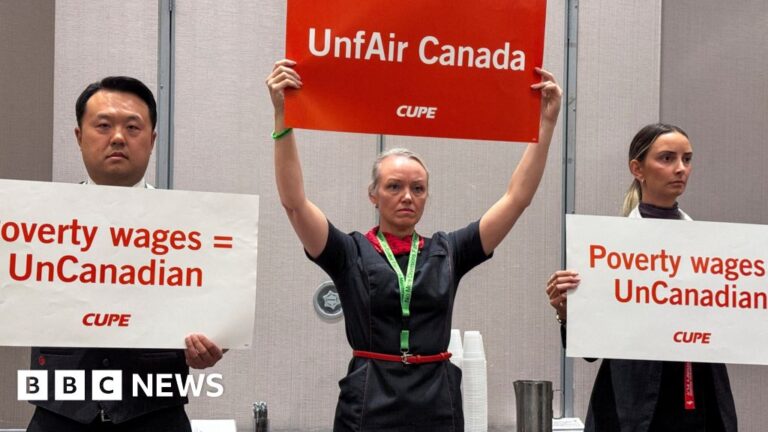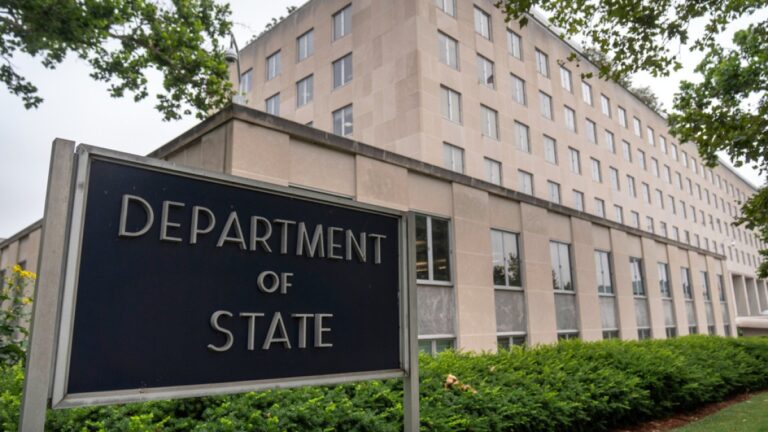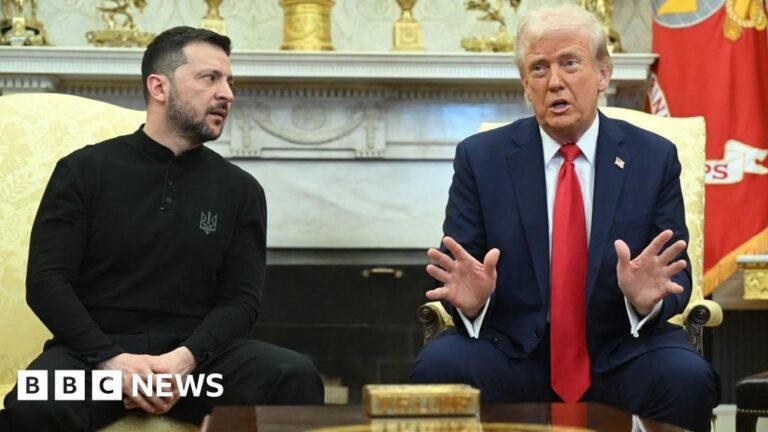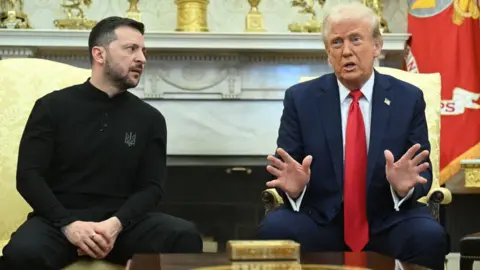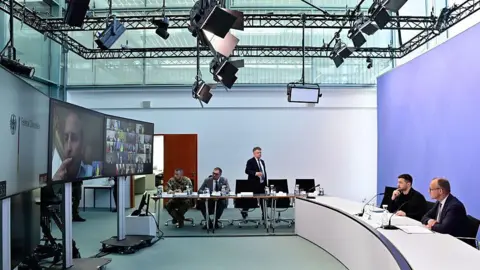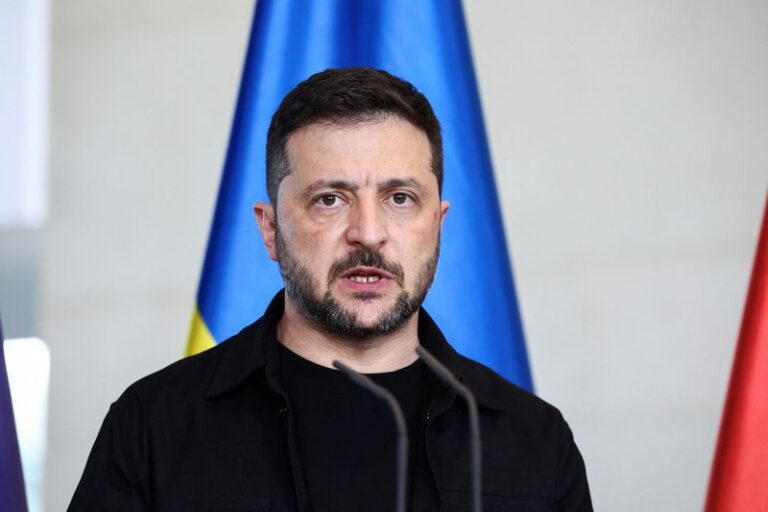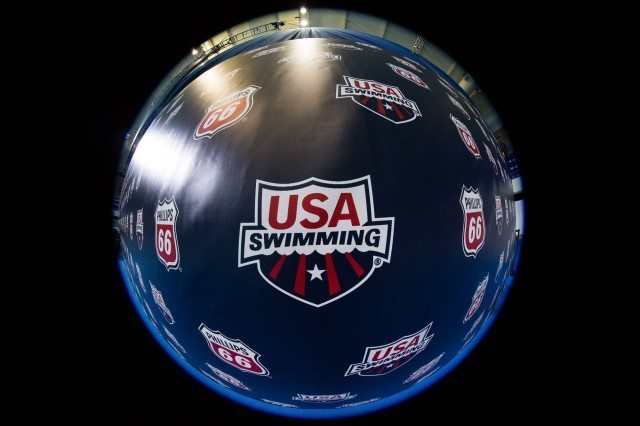By Gold Medal Mel Stewart on SwimSwam

This is an editorial. These opinions are my own, not on behalf of SwimSwam, its staff, or its partners. I write as someone who swam year-round from 1972 to 1996, won Olympic gold medals, and lived the national team experience for nearly 12 years.
Michael Phelps released a statement earlier this week giving context around his recent social post and remarks during the 2025 World Championships. Read his statement here.
In my opinion, Michael was far, far too nice, controlled even. I know because I was in those early conversations he led. And the truth is, those talks began in April. By late May, Michael had his letter ready to go.
The Facts
- Over 120 Olympic gold medals were represented among the Olympians who signed Michael’s letter.
- Top U.S. swim clubs in the nation signed.
- Four U.S. Olympic swimming coaches spanning Games from 1976 to 2024 signed.
- USA Swimming donors signed.
Michael tried to engage USA Swimming earlier this year and was brushed off. That’s when he put pen to paper drafting a letter that called for a systemic leadership reset at USA Swimming.
Michael was ready to go public as early as June 2nd. He delayed because he didn’t want to distract athletes at U.S. Trials. But once the letter’s existence became known to the Board, the tone changed. Suddenly, they engaged with him because the greatest Olympian of all time had put them on notice. That letter was hanging over their heads.
What Michael Didn’t Share
Behind the scenes, Michael faced relentless, overwhelming pressure not to release his letter.
To be 100% clear so everyone understands this, Michael’s letter was not nor has it ever been about the swimmers or any single meet. It was 100% about leadership—specifically, the USA Swimming Board of Directors.
The USA Swimming Statement
Think about this: The interim CEO’s recent statement leaned heavily into a narrative of illness at World Champs and praise for National Team Director Greg Meehan, but it completely ignored the elephant in the room.
All summer long, the Board knew the greatest Olympian of all-time was leading a coalition (Olympians, clubs, coaches, and donors) calling for seismic change, a complete overhaul.
And yet USA Swimming told the public it was all about sick swimmers.
My Opinion
That’s not just spin. That’s a massive misdirect.
This felt like a clear attempt to pit the sport’s biggest icon, Michael Phelps, against its most visible asset, the U.S. National Team.
From my perspective, if I were Michael, reading that statement, I would think they were saying this between the lines:
We’re making it about the ill swimmers, Michael, and not about your letter that we’ve known about all summer. In other words, we’re willing to throw you under the bus, rather than take any accountability for our failings.
And to me, that is infuriating.
Why Was A Coalition Calling For Leadership Change?
We are nearly a year into a CEO search, and this Board’s first pick back in February got a Safe Sport claim.
I called a fellow Olympian. No hello. They just roared into the phone: “What the actual f#&@, Mel? Am I reading this right? What is going on in Colorado Springs?!”
The Board did not disclose the Safe Sport claim until Braden Keith, SwimSwam’s co-founder and editor-in-chief, pressed them. Braden didn’t ambush them. He gave them a chance to clarify. Only then did they issue a statement.
It is my opinion that they, the USA Swimming Board of Directors, had no intention of telling the membership. My opinion is supported by the fact that the original explanation was at best a half-truth, not even a silence, but an intentional distraction. I believe they, the Board, would have been content for the CEO to quietly withdraw, Safe Sport claim unseen. That belief comes from 40 years in the sport, 33 years dealing with the Board, 13 years running the most-read swim media site in the world, and over a decade as a national team member.
No one on the board of directors resigned after that debacle. No one took responsibility. And, yes, it was a debacle.
A Pattern of Avoidance
Scandal has plagued the Olympic ecosystem: USA Gymnastics went bankrupt before rebooting, USA Swimming weathered years of lawsuits, and yet this Board made their first CEO hire without apparently doing any real due diligence.
Here’s what I know and why that is my opinion: When Braden’s staff looked into it, they got the backstory in one hour and eleven minutes.
Michael Phelps and Rowdy Gaines had every reason to question Board leadership. The CEO fiasco was just one of many grievances.
The Culture Problem
Olympians mortgage their childhood for Olympic glory. The sacrifice is worth it, but you need to know that behind the scenes USA Swimming can be embarrassingly clumsy, lacking in professionalism, and at times, they work against the very athletes they serve.
Of all Olympians, it is my opinion that Michael Phelps has suffered, been frustrated by and disappointed by this culture in an extraordinarily unique way. He was a star before he got his driver’s license, and a one-man messaging machine that never went off-script from the age of 15 in 2000 at the Sydney Olympics, through the age of 31 at the 2016 Rio Olympics. His message never wavered, “I want to grow the sport.”
Consider this public comment by Michael Phelps about USA Swimming:
“They treated me like a piece of meat.”
And his most recent statement on Instagram:
“I spent most of my life inside of a system that is supposed to support athletes. I gave it my everything, but I often felt that my voice went unheard. I was told to be grateful for the chance to compete and that it was more important to stay quiet and to keep the peace.”
Want to know how much daylight there is between those two statements? My better judgement tells me it could be a sprawling memoir, a multiple million dollar book deal, unpacking an enormous amount of detail he has swallowed up and stuffed deep down inside…and, yes, he just smiled and waved through it all, “Just happy to be a part of Team USA Swimming,” like we expect all of our Olympians to do.
Money Talks – Consider The Athlete Partnership Agreement (APA)
USA Swimming’s C-suite is well-paid. Their public 990s prove it. Yet when SwimSwam attempted to request comment and context on publicly posted financials—which are on USA Swimming’s website because they are required by law to publish them — USA Swimming fought SwimSwam for nine weeks. Their eventual excuse for not responding to the request? That SwimSwam was planning a “hatchet job.”
For the record, SwimSwam published over 12,000 reports that year. Less than five covered USA Swimming financials, and the reports were very AP style direct. Just the facts.
It is my opinion that USA Swimming does NOT want the membership base to know or to be educated about the financials.
Here’s one big reason why:
Compare C-suite salaries since 2010 to the Athlete Partnership Agreement (APA) stipends for national team members. APA support has been flat for 15 years, while executive pay has climbed. The takeaway: do NOT kid yourself. This is about them, the C-suite—not about you. They, the C-suite, are the top priority. And, if you’re keeping score, it is far more lucrative to be an executive at USA Swimming than to chase Olympic medals for the majority of National Team members.
USA Swimming can distribute all of the glowing press releases and statements they want about how much they love the swimmers, how proud they are of the swimmers. It’s BS. If you don’t believe me. Follow the money.
*NOTE: I contacted national team peers regarding this one topic for background and context. They shared my opinion about APA, but did not want their names revealed. It is my opinion they fear being ostracised by their governing body. So you understand this, being on the national team is very much like being in a family, a wonderful family of achievement and honours and glory, a family you want to remain connected to and lean on, during your career and in retirement…so long as you keep the family secrets and don’t make waves. Going back to 1980, and up until today, some version of that fear has remained intact.
Coaches and Fear
Until this summer, USA Swimming had never paid national team coaches for time away at Pan Pacs, Worlds, or the Olympics. Why? Because coaches feared that asking for compensation would get them sidelined.
Think about that: the very people who develop our athletes at home worried about retaliation from their own governing body.
Imagine this: You’re a swimming coach. You have invested years of your life to gain mastery, and then teach and guide young swimmers. You gain this skill and talent that molds young people with resilience strong enough to be first or second in the most powerful Olympic nation on earth. You do this, you achieve this, and then you fear advocating for your basic needs, basic costs (sometimes quite high) for 3, 4 or even 7 weeks away from your club team, your swimmers, your family.
*I asked USA Swimming about this, about what they are paying national team coaches. USA Swimming would not provide that information. While I am extremely thankful national team coaches are finally being paid (after 45 years), I am concerned that their payment does not match their sacrifice in time and skill. My better judgement tells me they are being underpaid.
Club Coaches – The Backbone of USA Swimming
If you are uninformed, watch this podcast with Chris Davis, CEO and Founder of SwimAtlanta. Chris has fostered and developed SwimAtlanta since 1977, building it into the third largest club team in the United States.
The USA Swimming Board of Directors will make excuses and push back about Chris’ opinions regarding governance. It’s all BS. Again, Chris has been at this since 1977, producing Olympians and national champions and helping countless young swimmers reach the very achievable goal of swimming in college.
Chris, a direct quote: “I would pay USA Swimming to leave me alone.”
Chris has a lot to share about USA Swimming, and at the same time, he desperately wants the governing body to be successful. Let that sink in. After 47 years in the sport, he’s sober about USA Swimming’s lack of support, but he still hopes. That’s sad. I’m sad, and I’m sad for him, for me, for anyone who cares about the state of the sport.
I shared Chris’ quote because it is so stark, but if you do not like Chris or share his opinion from his 47 years of coaching, I promise that you will get some version of a similar response from countless other club teams, club owners, and coaches. They might not be as dismissive or as harsh about USA Swimming as Chris Davis, but their opinions of the governing body will be pointed and hyper-critical.
The Colorado Springs Bubble
Heard of this? Most national team members and veteran coaches just say The Bubble. You typically have to log years in the sport to come to an understanding of what this means.
For me, someone running a business, I see it in dollars and cents.
The Olympic ecosystem is a giant warchest of cash, and business is better than it has ever been in history.
– $18 billion in rights fees and sponsorships
– $1 billion in reserve
That money flows down from the IOC and is doled out like Olympic welfare (and you should think of it as Olympic welfare) to the USOPC and then to each sport, like USA Swimming.
USA Swimming triumphantly distributed a press release earlier this year about how they earned $50 million and change over 2024, the Paris Olympic year, the most, in fact, in USA Swimming history,
Most read that and think leadership is kicking-butt and taking names! A closer look will reveal that USA Swimming sponsorships were down and registration was flat in 2024. USA Swimming gross revenue was up due to higher fees and Olympic welfare trickle. In sum, USA Swimming collected their welfare and called it a win, while losing sponsors and not growing the sport in an Olympic year..
Consider that. If you are in USA Swimming leadership, you don’t really need to do anything, take chances, strive to grow, strive to be creative or solve problems. Why would you? The gravy train, that massive Olympic welfare, is there, and you can count on it. (Heck, you can even throw Michael Phelps under the bus. Who cares about his 28 medals. He’s retired.)
The Bubble is warm and rewarding, but it has bred complacency, which is why club teams, national team members, Olympic alums, and informed shareholders are so angry.
We have taken the massive lead Michael Phelps gave us, and we’re squandering it.
Anger spikes in non-Olympic years, especially when we see the same problems persist, registration shrink, and core financials flag. Anger simmers due to the fact that we know how large the sport could be, how pervasive our sport is as a recreational lifestyle, and how necessary swimming is to the masses as a life-saving skill. Swimming touches a lot of lives. We know our potential is great, that the business of swimming should be far more robust.
Change is long overdue, but it’s challenging to create change when The Bubble keeps growing and hiding how poorly USA Swimming’s performing.
How Out of Touch Is The Board?
I love this game. It’s not fair, but it’s fun. SwimSwam has owned a data company since 2015, and Braden Keith, our co-founder, is basically Swimming-AI in human form. I’ve been in the sport for four decades. I know the history, I know the numbers, and I know the people.
And I should add: I like most of the board members. I consider many of them friends. But here’s an example of just how detached they can be.
I called a board member back in early December 2023, and said, “Hey buddy, your roof’s on fire. What are you doing about it?”
Confused and a little annoyed, he said, “Roof on fire? Come on, Mel, just tell me.”
I explained that I’d been tracking the SWIMS 3.0 development for over a year. I’d spoken with top swimming alums in tech (real experts with serious CVs). Their verdict? SWIMS 3.0 was going to be a disaster. One even told me, “Grab your popcorn, Mel. This is USA Swimming. It’s going to be a sh#%-show. Like a 12-year-old thinking they can make the Olympics.”
They were right. The rollout wasn’t stress-tested. It was abrupt, messy, and created a wave of grievances from coaches and clubs. By early December, coaches were furious, and I predicted registration would drop at least 4% heading into an Olympic year.
Then I added the kicker, telling the board member: “And my bet is you’ll still bonus the CEO $250K or more on top of his $650K base.”
He, the board member, brushed me off.
The reality? Registration was down 4.6%, and the board did bonus the CEO just under $250K, roughly about $234–236K (from my memory) on top of his base.
I wish I could say this was an outlier moment. It’s not. It’s one of many examples that show a pattern: avoidance, misdirection, and zero urgency when real issues hit.
We should all want a board that’s engaged, proactive, and visionary, leaders who dream big and chart a course the whole sport can rally around. Instead, we have a board that reacts too slowly, dodges the hard stuff, and has historically been spineless on vision. The board talent has been there, truly impressive individuals striving to serve the sport. The vision has not.
What Does The Future Hold? Predictions!
The Board will hire a CEO from outside swimming culture. The announcement will come soon. They’ll release a polished opening letter about how “honored” they are to lead our great tradition. They’ll go on a listening tour (aka, wasted time because they’re green and will be flying blind). And sometime before Pan Pacs in 2026, USA Swimming will roll out a branding tweak or some shiny new messaging about how we should feel about ourselves.
By November 2027, SwimSwam will report the financials. The coaches, the member base, and shareholders in the industry will read how much we’ve paid this person. They’ll look around, realize nothing’s changed, and they will be angry.
Remember The Bubble? It’s warm and safe. Inside that bubble, we have a culture of overpaying chief executives, and it’s corrosive.
Here’s why it is corrosive. The new CEO will walk in with an $800K–$850K base, padded to $900K–$1M+ with fluffy KPIs, and spend their tenure protecting that paycheck. That will be their top priority, to protect their position, not grow the sport. Their real job will be keeping the Board happy, making them close friends, dodging risk, and making sure the boat never rocks. It will shape every aspect of their leadership, meaning they will hire C-suite executives who are loyal to them. They will hedge on support of athletes, coaches, and clubs because it will all factor in and impact their personal bottom-line….money.
I’m sorry to say this, but it’s human nature.
If that doesn’t make you mad, consider this: this CEO will be an outsider, paid roughly $1M per year to learn on the job. Swimming is complicated and an extremely unique culture. Our last CEO swam through college and coached for a few years, but left the sport for nearly three decades. Our last CEO, being fair to him, was savvy, and even with that background, he was still figuring things out seven years into the role.
We have less than three years until LA2028. We can’t afford another on-the-job training cycle.
The Bubble is real. And if we keep inflating it, the sport we love will stay stuck exactly where it is.
Where Do We Go From Here?
If you’ve read this far, you’re probably exhausted. Me too. I know you’re tired of complaints and want real answers.
My goal here wasn’t to dump on USA Swimming for sport. It was to give you a glimpse of the history, patterns, and missteps that have now spilled into public view via voices like Michael Phelps and Rowdy Gaines.
Here’s my promise: if I’m wrong or inaccurate, I’ll update the record. I’ll provide context. I’ll even apologize if I’ve been shortsighted or lacked data. And I’ll recommit to chasing the truth, explaining exactly how, why, and when that will be done.
In my opinion, USA Swimming will not do that. (I’m pretty sure they’ll attempt another misdirection.) And that is the tragedy. You cannot improve, evolve, or grow stronger without first confronting your weaknesses head-on. If you’re not brutally honest about your history and failures, you’re not just stumbling forward, you’re locking yourself into the same cycle of mistakes, dooming the future before it starts.
Solutions? A path forward? We can and have gotten granular on this topic. I will detail that in another post, but as a teaser, I would begin by addressing the problem of incentivizing a leader, a CEO to actually make swimming their top priority and not their paycheck.
What if:
C-suite salaries (CEO, COO, National Team Director) are capped at $360,000/year, with equally shared bonuses tied to three KPIs:
- Membership growth
- New revenue generation
- National team performance
If leadership gets a raise, Athlete Partnership Agreement stipends (aka National Team members) and national team coach compensation get the same percentage increase. No exceptions. No compensation committee needed. The math is simple enough for the membership to understand.
We’re building a team. Everyone is invested and everyone enjoys the success.
Remember, our aim is to push C-suite performance. Don’t feel sorry for the top three executives. 360k base in Colorado Spring meets their needs, and bonuses are not challenging to land. Any CEO worth their salt should walk revenue through the door on day one.
It is my belief that transformational change is possible, but only when we get brutally honest about The Bubble and the culture of complacency it breeds.
The frustration you’ve heard throughout this piece can be distilled to one simple truth: national team members, veteran coaches, and club owners are diehards. We’re all-in. We live this sport, breathe it, and fight for it every single day. All we’re asking (especially in a domestic Olympic run-up where the potential for success is sky-high) is for our leadership to match that commitment. Even half of it. Just give us a fraction!
That’s not too much to ask. And it’s long past time to deliver.
Read the full story on SwimSwam: Michael Phelps’ Letter And The Story USA Swimming Didn’t Tell You




